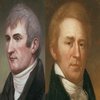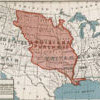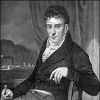Decennial Census Historical Facts
Decennial Census Historical Facts
Censuses are not conducted in a vacuum. They occur amidst internal and external crisis, shifts in cultural interests, and events that become "defining moments" for each decade. Census data reflect the growth of the population as well as the changing values and interests of the American people.
Decennial Historical Facts provides a portrait of the United States both statistically and culturally in the following four areas:
- Pop Culture – key milestones from the decade following the census.
- Population
- Census Details
- 10 Largest Urban Places
1800
ICONS: Lewis & Clark, Louisiana Purchase, Robert Fulton's Steamboat



Population
| 5,308,483 | U.S. Resident Population |
| 6.1 |
Population per square mile of land area |
| 35.1 |
Percent increase of population from 1790 to 1800 |
| 16 |
Number of States |
10 Largest Urban Places
| Rank |
Place |
Population |
|---|---|---|
| 1 |
New York City, NY | 60,515 |
| 2 |
Philadelphia, PA | 41,220 |
| 3 |
Baltimore, MD | 26,514 |
| 4 |
Boston town, MA | 24,937 |
| 5 |
Charleston, SC | 18,824 |
| 6 |
Northern Liberties township, PA | 10,718 |
| 7 |
Southwark district, PA | 9,621 |
| 8 |
Salem town, MA | 9,457 |
| 9 |
Providence town, RI | 7,614 |
| 10 |
Norfolk borough, VA | 6,926 |
The 1800 Census
| Cost | $66,000 |
| Cost per Capita (cents) | 1.2 |
| Total Pages in Published Reports | 74 |
| Number of Enumerators | 900 (est.) |
| Census Bureau Director | John Marshall |
| Number of Questions on the Questionnaire | 6 |
| Number of Questions on the Long Form | N/A |
Pop Culture
- John Chapman (a.k.a. Johnny Appleseed) begins handing out apple seeds and seedlings to Ohio settlers in 1800.
- The U.S. Library of Congress is founded on April 24, 1800.
- The United States and North African Berber Muslims fight the First Barbary War from 1801 to 1805 in an effort to halt Barbary pirates' attacks upon American merchant shipping.
- The "District of Columbia Organic Act of 1801" creates the planned city and capital of the United States under the jurisdiction of the U.S. Congress.
- The first edition of the New York Post is published November 16, 1801.
- Martha Washington, America's first "First Lady" dies May 22, 1802, at Mount Vernon, VA.
- Lewis and Clark begin their expedition to map the northwest United States on May 14, 1804.
- Alexander Hamilton dies following a duel with Vice President Aaron Burr on July 11, 1804.
- Painter Charles Willson Peale establishes the Pennsylvania Academy of the Fine Arts in 1805.
- Noah Webster publishes his Compendious Dictionary of the English Language in 1806.
- President Thomas Jefferson signs "The Act Prohibiting Importation of Slaves of 1807" into law on March 3, 1807, ending the transatlantic slave trade.
- On April 11, 1803, while negotiating to purchase New Orleans, LA, from the French for $10 million, the U.S. delegation headed by Robert R. Livingston is dumbfounded to be offered the 828,800 square mile "Louisiana Purchase" instead for $15 million. Livingston accepts without consulting President Thomas Jefferson to prevent Napoleon from rescinding the offer.
- On February 11, 1809, Robert Fulton patents his steamboat and soon after begins offering services on major rivers and the Chesapeake Bay.
- Future 16th President of the United States Abraham Lincoln is born on February 12, 1809, in Hardin County, KY.
Page Last Revised - October 8, 2021




